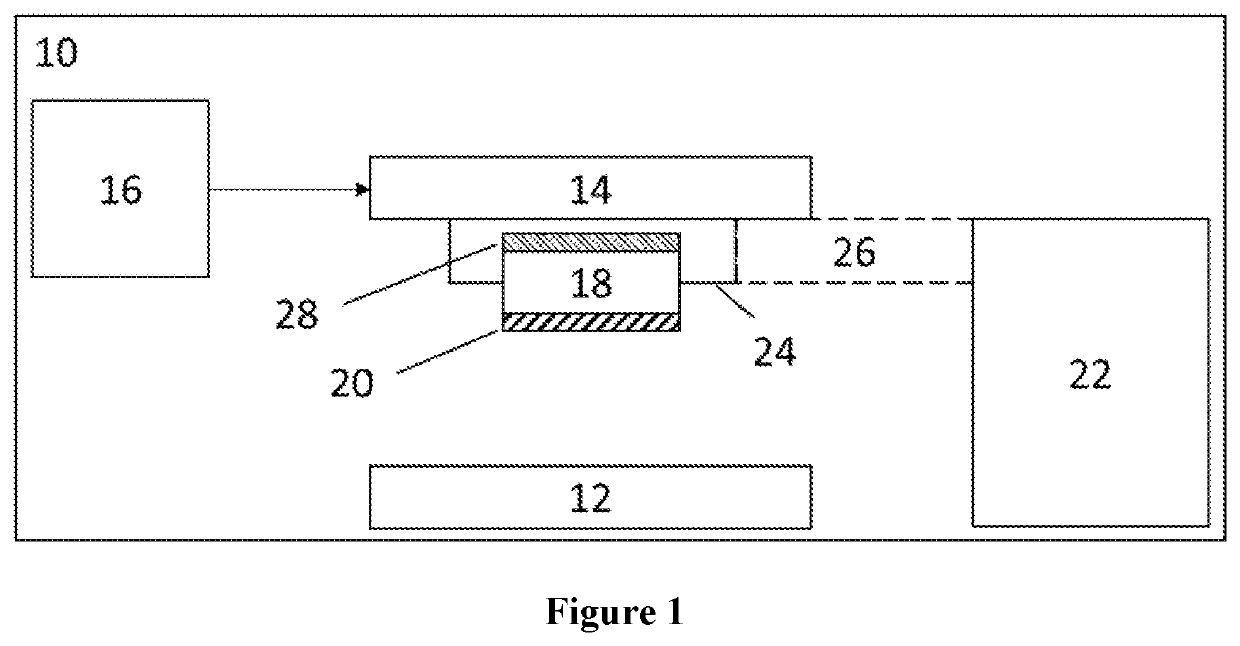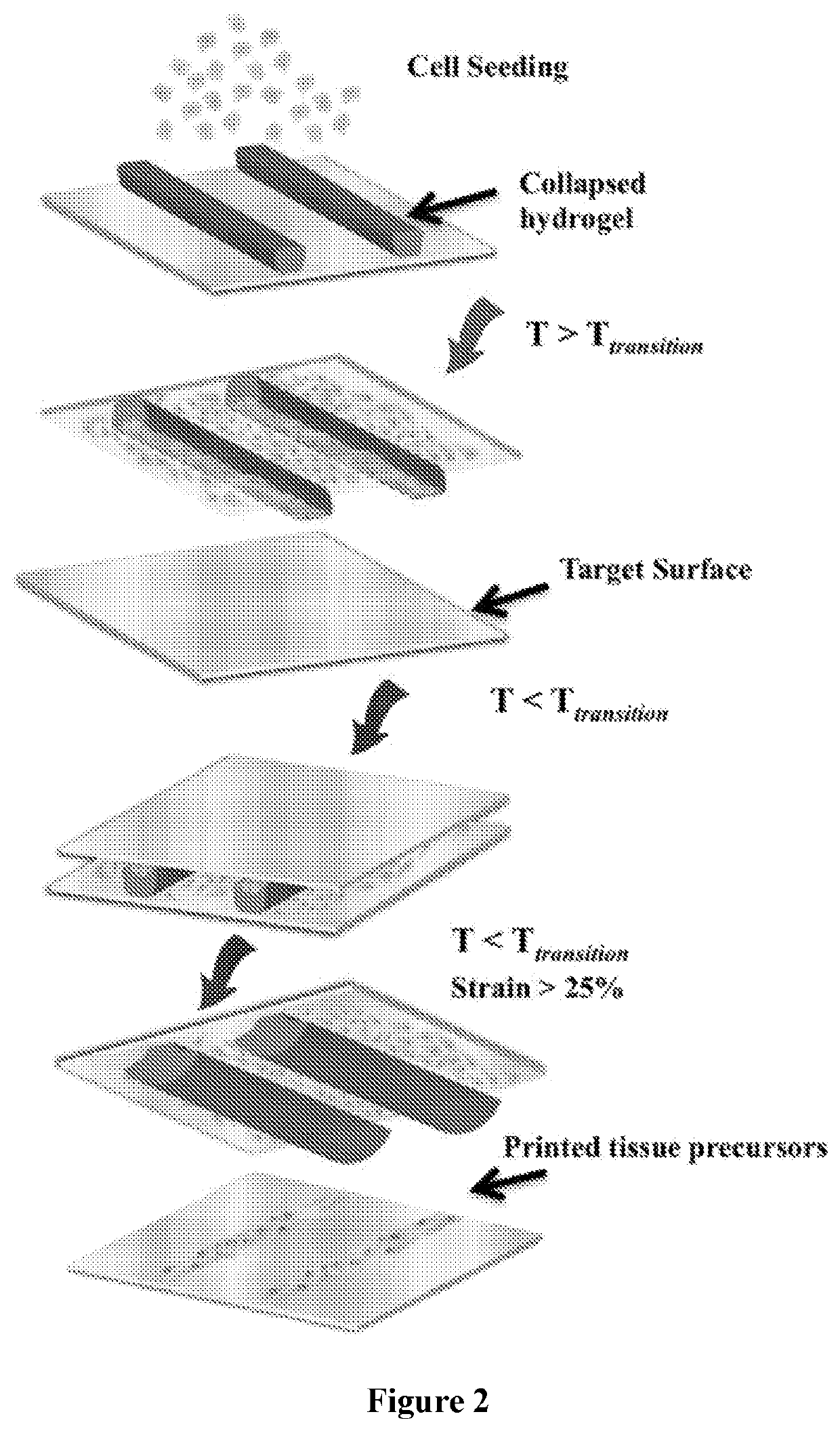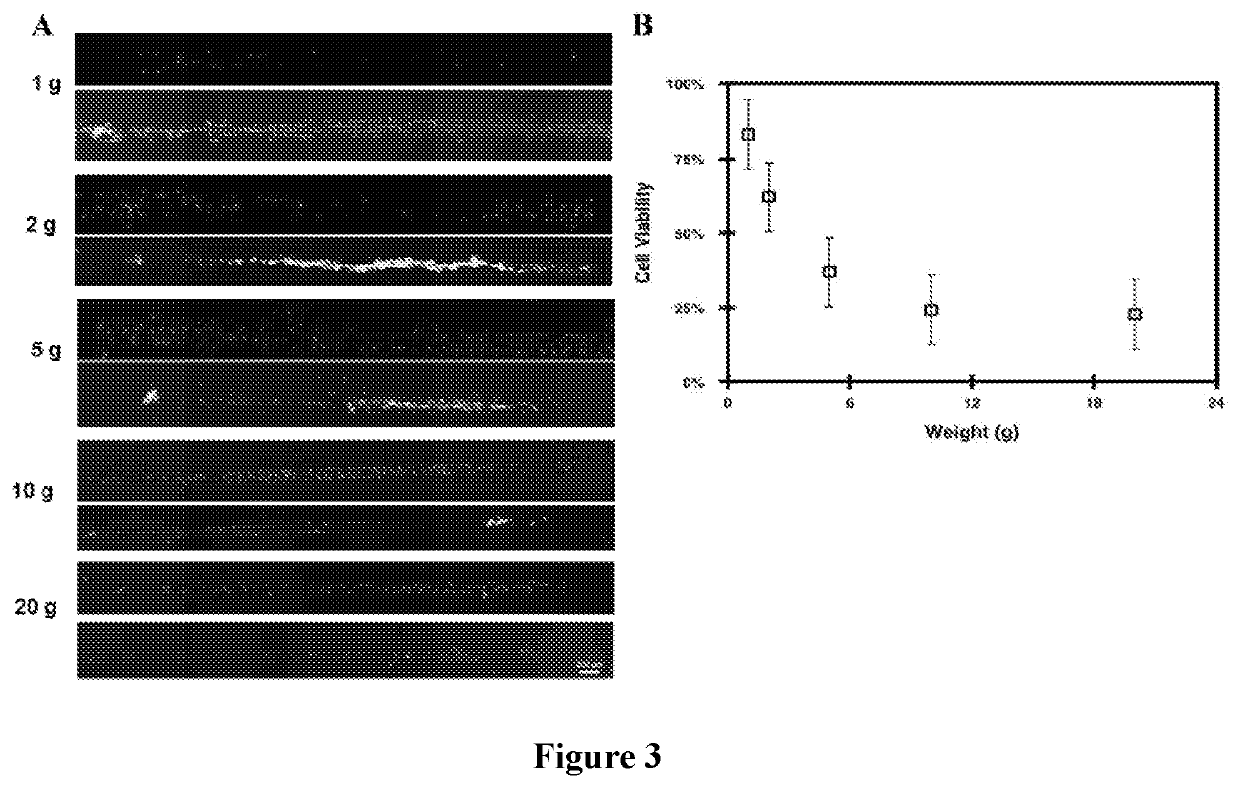High-Throughput Platform for Bioprinting Tissue Modules
a tissue module and high-throughput technology, applied in biochemistry apparatus and processes, specific use bioreactors/fermenters, prosthesis, etc., can solve the problem of enhancing prevascularization in engineered tissues, and achieve the effect of rapid production of organized tissue precursors
- Summary
- Abstract
- Description
- Claims
- Application Information
AI Technical Summary
Benefits of technology
Problems solved by technology
Method used
Image
Examples
example 1
ve Pressure Applied During Printing Affects Cell Viability
[0078]Viability of the printed tissue precursors was found to be predominantly correlated with the amounts of compressive pressure applied during printing. Cell survival was observed after 24 hours of printed tissues on polylysine coated target surfaces. To examine the adequate amounts of pressure necessary to print tissue modules, cells seeded on the shape-changing structures were subjected to pressures ranging from 0.71 to 14.5 psi and viability of the cells after transfer was analyzed. Calibration weights of 1-g, 2-g, 5-g, 10-g, and 20-g were used to vary the amounts of pressure. A LIVE / DEAD viability assay determined that the lowest amount of pressure applied resulted in the most viable cells (˜83%±3) of the (FIG. 3). The number of dead cells decreased as the amount of pressure applied was systematically reduced. A plot of the measured viable cells shows a power series regression model with an R-squared value of 95.9%.
example 2
Micro-contact Printing on Cell Adhesion Molecules Adsorbed Target Surfaces
[0079]Printing on target surfaces adsorbed with collagen type 1, fibronectin, and polylysine did not show any statistical difference in cell viability. Viability of printed tissue precursors was reduced by 11, 22, and 7% for collagen, fibronectin, and polylysine, respectively, in comparison to the control samples. The negative control consisted of cells printed on plain glass surface, and no cell transfer was observed to such surfaces while a positive control that included cells cultured on plain glass showed the highest number of viable cells. A single factor ANOVA test indicated no significant difference between the means (p>0.05). For subsequent printing, polylysine was selected as the CAM of choice for all target surfaces due to the ease of use and stability at ambient temperature.
example 3
issue Precursors Reveal Preserved Focal Adhesion Components
[0080]To assess cellular morphology and metabolic activity, printed cells were compared to cells cultured on a plain glass surface. An hour after printing, the actin stress fiber staining showed an elongated morphology compared to the rounded morphology seen in cells seeded on glass even after 2 hours. To examine the cell-matrix adhesions, the cell nucleus was stained and the alpha 5 integrin observed an hour and 2 hours after printing. The results reveal emergence of physical integrin clustering at an hour after printing and enhanced clustering after 2 hours of printing indicating rapid reformation and recapitulation of focal adhesion components, which is attributed to the preserved cell morphology compared to the control samples (FIG. 5).
PUM
| Property | Measurement | Unit |
|---|---|---|
| time | aaaaa | aaaaa |
| weights | aaaaa | aaaaa |
| weights | aaaaa | aaaaa |
Abstract
Description
Claims
Application Information
 Login to View More
Login to View More - R&D
- Intellectual Property
- Life Sciences
- Materials
- Tech Scout
- Unparalleled Data Quality
- Higher Quality Content
- 60% Fewer Hallucinations
Browse by: Latest US Patents, China's latest patents, Technical Efficacy Thesaurus, Application Domain, Technology Topic, Popular Technical Reports.
© 2025 PatSnap. All rights reserved.Legal|Privacy policy|Modern Slavery Act Transparency Statement|Sitemap|About US| Contact US: help@patsnap.com



